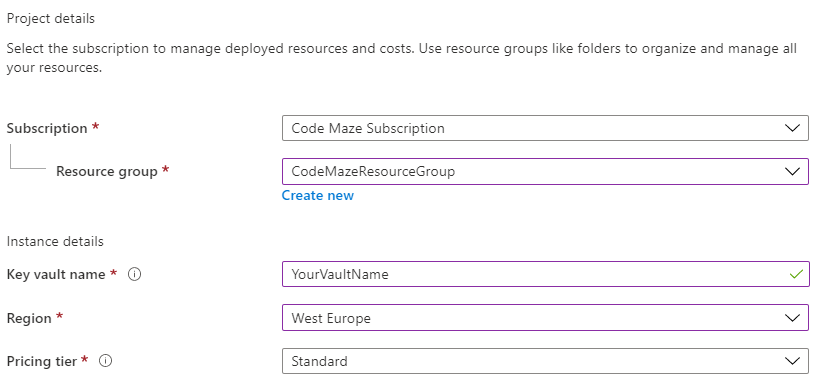

Crypto User can create new keys, but can't delete keys.

Managed HSM Crypto Officer/User: Built-in roles that are usually assigned to users or service principals that will perform cryptographic operations using keys in Managed HSM. They can create more role assignments to delegate controlled access to other users. Managed HSM Administrators: Users who are assigned the Administrator role have complete control over a Managed HSM pool. The available actions depend on the permissions granted. Vault consumer: A vault consumer can perform actions on the assets inside the key vault when the vault owner grants the consumer access. They can roll to a new version of the key, back it up, and do related tasks. Administrators can control the key lifecycle. The vault owner can also set up auditing to log who accesses secrets and keys.
#Azure key vault full
Vault owner: A vault owner can create a key vault and gain full access and control over it. It's most often used to refer to the set of Azure and Microsoft 365 services for an organization. Tenant: A tenant is the organization that owns and manages a specific instance of Microsoft cloud services. See Azure Key Vault REST API overview for complete details. Managed HSM pools only support HSM-backed keys. Vaults support storing software and HSM-backed keys, secrets, and certificates. Key Vault service supports two types of containers: vaults and managed hardware security module(HSM) pools. A secret is anything that you want to tightly control access to, such as API keys, passwords, certificates, or cryptographic keys. Azure Key Vault is a cloud service for securely storing and accessing secrets.


 0 kommentar(er)
0 kommentar(er)
